What is IDOC in SAP?
IDoc stands for Intermediate Document, which is a data exchange format used by SAP systems to exchange information between different systems or modules within the same system. An IDoc is a self-contained unit of information that can be sent from one SAP system to another or from one module to another within the same system.
An IDoc consists of a header and one or more segments. The header contains information such as the IDoc type, the sender and receiver, the creation date and time, and the status of the IDoc. The segments contain the actual data that is being exchanged.
IDocs are widely used in SAP systems for various business processes such as order processing, shipping, and billing. They are also used for integration with non-SAP systems, such as EDI (Electronic Data Interchange) systems.
Overall, IDocs provide a standardized and reliable way for exchanging data between different systems, which is critical for the smooth operation of many business processes.
IDOC Types
IDoc types in SAP are predefined structures that define the format and content of IDocs used for exchanging data between SAP systems or between SAP and non-SAP systems. An IDoc type contains information about the structure of the IDoc, including the segments that make up the IDoc, the data types of each segment, and the relationships between the segments.
SAP provides several standard IDoc types for different business scenarios, such as purchase orders, shipping notifications, invoices, delivery schedules, and payment processing. Each IDoc type has a unique identifier and a predefined structure that corresponds to the business scenario it is intended to handle.
Standard IDOCS Types in SAP
SAP provides various types of IDocs that are specific to different business scenarios. Some of the standard IDoc types in SAP are:
-
ORDERS: This IDoc type is used for purchase order processing. It contains information such as the vendor, material number, quantity, and price.
-
DESADV: This IDoc type is used for shipping notifications. It contains information such as the shipment number, delivery date, and shipping carrier.
-
INVOIC: This IDoc type is used for invoice processing. It contains information such as the vendor, material number, quantity, and price.
-
DELFOR: This IDoc type is used for delivery schedule processing. It contains information such as the delivery date, material number, and quantity.
-
REMADV: This IDoc type is used for payment processing. It contains information such as the payment amount, payment method, and payment date.
-
MATMAS: This IDoc type is used for material master data processing. It contains information such as the material number, description, unit of measure, and pricing.
-
HRMD_A: This IDoc type is used for human resources master data processing. It contains information such as employee data, such as name, address, and employment information.
Note: In addition to the standard IDoc types provided by SAP, it is also possible to create custom IDoc types to meet specific business requirements. Creating custom IDoc types requires knowledge of the IDoc structure and the use of appropriate SAP development tools.
IDOC Extension
An IDoc extension refers to the process of customizing and enhancing the standard SAP IDoc structure to meet specific business requirements. IDoc extensions involve adding custom segments, fields, or values to an existing IDoc type, or creating entirely new IDoc types to handle specific data requirements.
IDoc extensions allow SAP users to customize the standard IDoc structure to meet their specific business needs, without having to develop custom interfaces or modify the underlying SAP code. IDoc extensions can be performed using SAP's development tools, such as the IDoc extension editor or the ALE configuration tool.
IDOC Segments
IDocs are made up of a hierarchical structure of segments, each of which contains a specific type of data. The structure of an IDoc in SAP is composed of three main components: the Control Record, the Data Records, and the Status Records.

-
Control Segments: Control segments are used to manage and control the IDoc processing. There are two control segments in every IDoc: the EDI_DC40 segment, which contains the control information for the IDoc, and the E1EDK01 segment, which contains the IDoc header information.
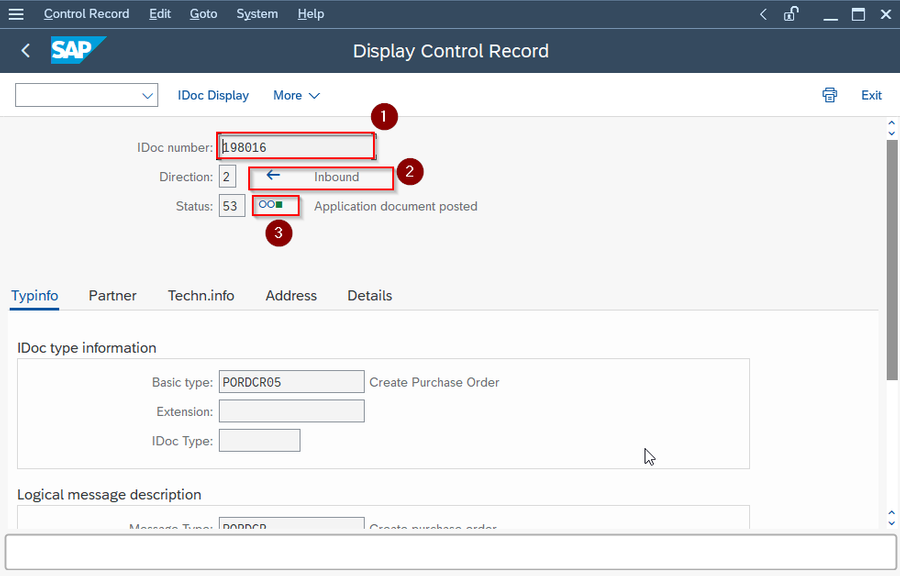
-
Data Segments: Data segments contain the actual data being exchanged in the IDoc. There are many different types of data segments, such as E1EDP01 for purchase order data, E1EDS01 for delivery data, and E1EDC01 for invoice data.
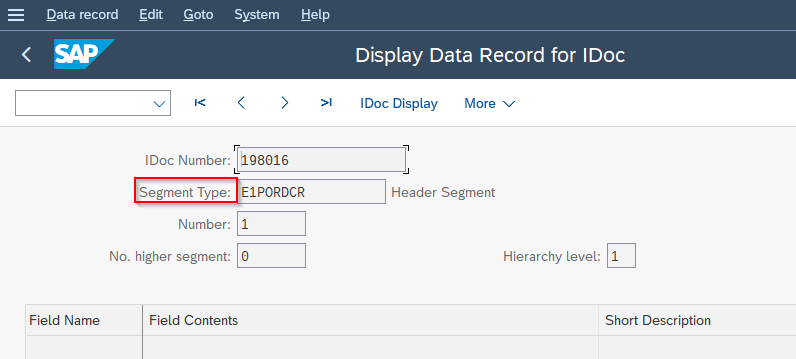
-
Status Segments: Status segments are used to track the processing status of the IDoc. They contain information about whether the IDoc was successfully processed, whether there were errors or warnings during processing, and other information related to the processing of the IDoc.
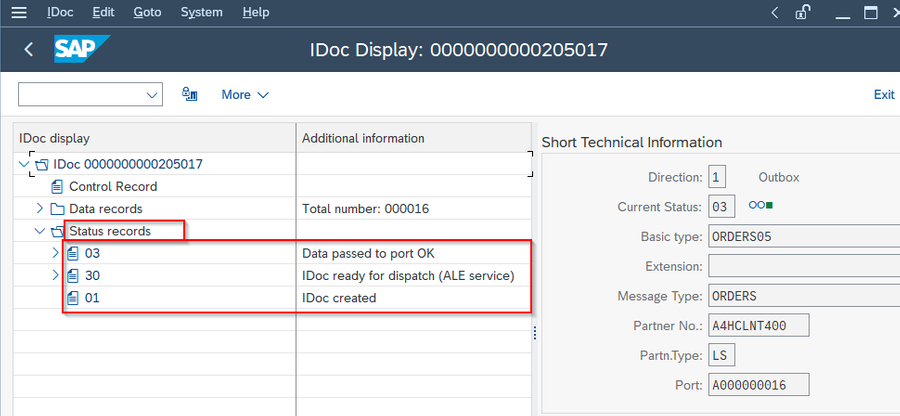
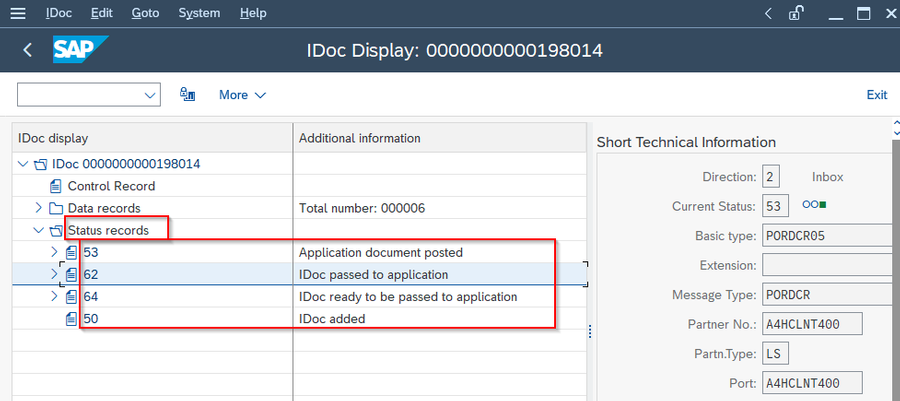
Each segment contains a set of fields, which hold the actual data being exchanged. The fields are defined by their data type and length, and each field has a unique name within its segment. The data in the fields can be alphanumeric, numeric, or date/time values.
Inbound and Outbound IDOCs
The data which comes into SAP is known as Inbound IDoc, 2 stands for Inbound IDoc whereas the data which goes out of SAP is known as Outbound IDoc, 1 stands for Outbound IDoc.
Inbound IDocs
Inbound IDocs are used to send data to the SAP system from an external system or application. The external system sends the IDoc to the SAP system, and the SAP system processes the data in the IDoc.
For example, a supplier might send an inbound IDoc to the SAP system containing data about a purchase order. The SAP system would then process the data in the IDoc and create a purchase order in the system based on the data in the IDoc.
Outbound IDocs
Outbound IDocs, on the other hand, are used to send data from the SAP system to an external system or application. The SAP system sends the IDoc to the external system, and the external system processes the data in the IDoc.
For example, the SAP system might send an outbound IDoc to a warehouse management system containing data about a shipment. The warehouse management system would then process the data in the IDoc and create a shipment in the system based on the data in the IDoc.
IDOC Partner Profile
IDoc partner profile is a configuration object that defines the communication parameters and settings for exchanging IDocs with a particular partner or external system. T-code WE20 is used to maintain the IDOC partner profile.
Please follow the steps below to maintain the IDoc partner profile:
Execute t-code WE20 in the SAP command field.
.png)
Now on the Partner Profile screen enter the following details
- Partner Type: Specifies the type of partner, such as a customer, vendor, or internal system.
- Partner Number: Specifies the unique identifier for the partner.
- Message Type: Specifies the type of IDoc message being sent or received, such as an order, delivery, or invoice.
- Logical System: Specifies the logical system name of the sender or receiver.
- Partner Function: Specifies the role of the partner, such as the sender or receiver.
- Basic Type: Specifies the IDoc basic type, which defines the structure and content of the IDoc.
- Inbound/Outbound Processing: Specifies the processing options for inbound or outbound IDocs, such as message control, error handling, and processing time.
.png)
By defining these settings in the IDoc partner profile, you can ensure that IDocs are exchanged between systems or applications in a standardized and efficient manner and that they are processed accurately and reliably.
Display/ Search IDOCS in SAP
The SAP can display and search for IDocs using transaction codes such as WE02, WE05, and WE09.
Here are the steps to display and search for IDocs using these transaction codes:
Displaying IDocs
Execute t-code WE02 in the SAP command field.

Enter the IDoc number or any search criteria in the selection screen and click on Execute button.
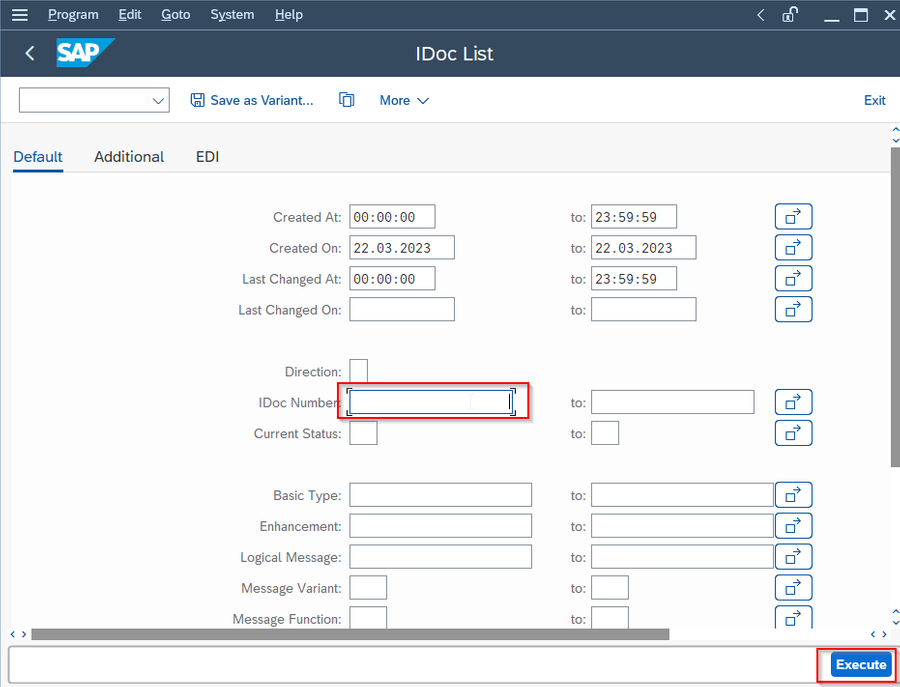
The system will display the details of the IDoc on the output screen.
Searching for IDocs
Execute WE05 in the SAP command field.

Enter the search criteria, such as the partner number or message type, in the selection screen and click on Execute.
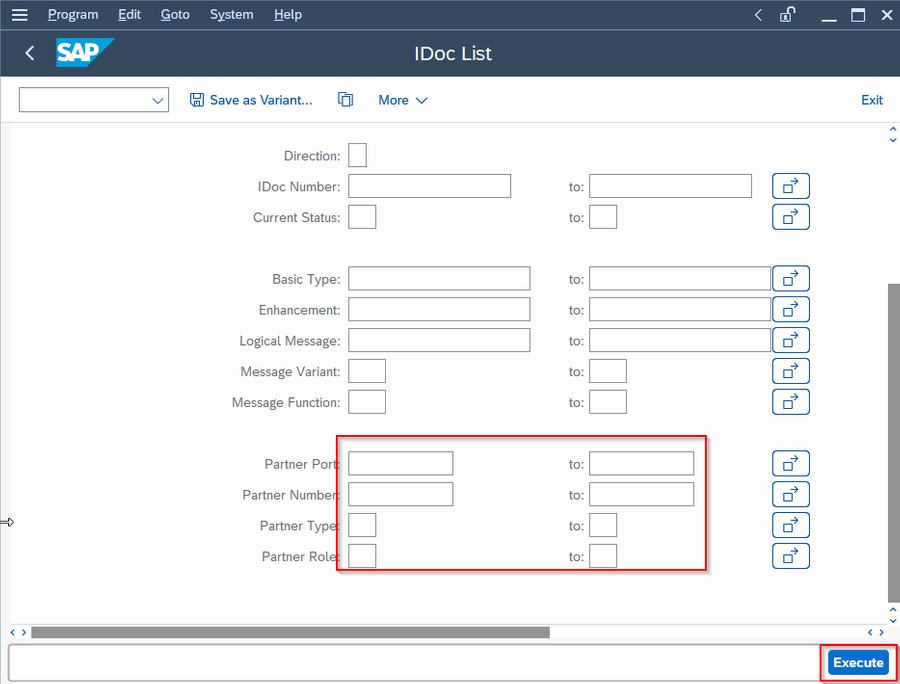
Delete IDOC from the SAP system
To delete an IDoc from the SAP database, you can use transaction code BD87 or the program RSEDELETE.
Please follow the steps below to delete an IDoc using t-code BD87:
Execute BD87 in the SAP command field.

Enter the selection criteria for the IDoc you want to delete, such as the IDoc number, message type, or partner number.
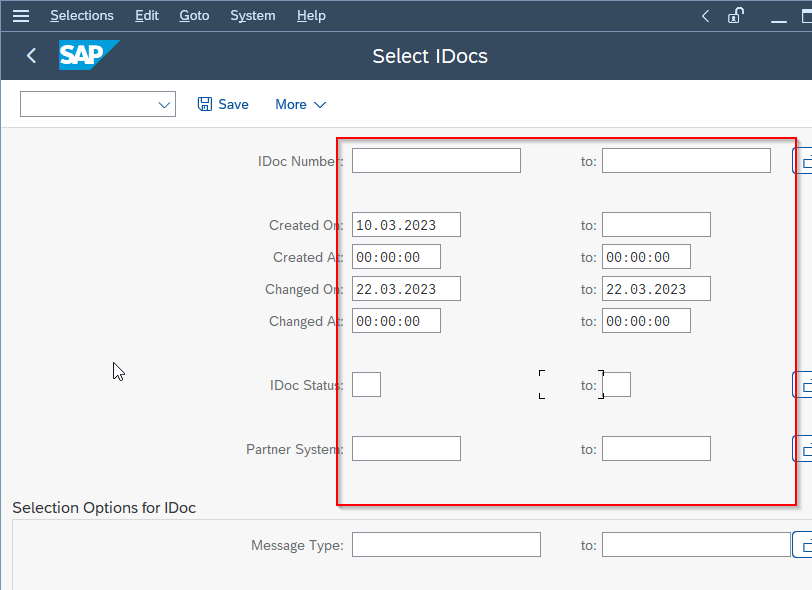
Click on Execute. The system will display a list of all the IDocs that match the selection criteria.
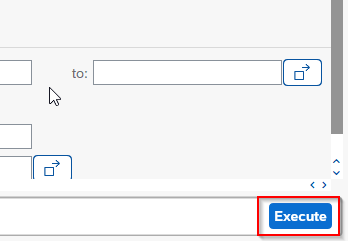
How IDOC is Relevant to FICO Consultants?
Select the IDoc(s) you want to delete and click on the Delete button. In the confirmation window, click on Yes to confirm the deletion of the selected IDoc(s).
IDocs can be used for a variety of purposes such as exchanging financial data between SAP and non-SAP systems, integrating third-party software for tax calculations, and integrating with external banking systems for payment processing.
As a FICO consultant, it is important to have a good understanding of the IDoc concept and the related transaction codes and programs in order to effectively design and configure the system for data exchange with other systems or applications. FICO consultants may be involved in the following IDoc-related activities:
- Defining IDoc interfaces for financial data exchange with external systems or applications.
- Configuring partner profiles for inbound and outbound IDoc processing.
- Monitoring and troubleshooting IDoc errors and issues.
- Testing IDoc interfaces and data exchange with external systems.
- Providing support and guidance to business users on IDoc-related issues and processes.
Therefore, a good understanding of IDocs and their integration with other SAP modules and external systems is essential for a FICO consultant to ensure smooth and efficient financial operations in the organization.